Australian cattle herd in official destock: ABS
The latest livestock products data released by the Australian Bureau of Statistics (ABS) shows that the Australian cattle herd is in an official destock with the female slaughter rate (FSR) at 52.2%. Consecutive figures above 47% indicates a destock where producers sell off breeding cows usually once they reach maturity.
The data, analysed by Meat & Livestock Australia (MLA), shows that the last quarter was the largest quarterly slaughter since September 2015 at 2,241,200 head.
According to MLA’s Manager of Market Information Stephen Bignell, this is not a destock due to depressed prices or weather conditions, but rather a stabilisation of the herd after a protracted multi-year rebuild.
“Paddock capacity is high and so producers are turning off older breeding cows, resulting in the highest cow and heifer slaughter since December 2019,” Mr Bignell said.
“Across the board we have seen elevated slaughter rates. Nationally, cattle slaughter lifted by 6% compared to the last quarter, up 17% compared to Q3 last year. Cattle slaughter rates lifted in all states except for Tasmania”.
“If this trend continues it is expected slaughter will reach MLA’s projection of 8.18 million head calendar year 2024.”
Beef production has also lifted. This quarter was the highest quarterly beef production on record at 690,694 tonnes, a 7% lift from the previous quarter and 17% higher compared to Q3 last year. Year-to-date beef production is 1,908,222 tonnes, the third highest on record, behind 2015 and 2014 which were years when slaughter exceeded 9 million head. Improved carcase weights over the last decade allow Australia to produce more beef from less animals.
Cattle carcase weights lifted to 308.2kg nationally. However, these carcase weights are below those recorded in 2021, 2022 and 2023 due to the increase in female and grassfed animals. For the quarter, Queensland experienced a 2% lift in carcase weights to 323.7kg, the highest in the country.
Cattle producers in Australia generated record receipts for the quarter, receiving $4.26 billion for slaughter ready cattle – the highest value on record.
Lamb
Quarterly national lamb slaughter of 6.3m head is 12% lower than last quarter and 5% below the same point last year, while production last quarter was also down 16% from last quarter at 177,147 tonnes.
“Despite quarter three lamb dipping in quarter three, Australia is still on track for record lamb slaughter and production this year. For the year to September 2024, we had processed 20,272,000 lambs which produced 488,566 tonnes of lamb meat” Mr Bignell said.
“After an extremely strong second quarter which broke records, lamb production has come back. A delay in production was expected due to conditions currently experienced across southern regions of the country.
Lamb carcase weights eased 4% to 23.6kg nationally. Positive conditions across the state of New South Wales helped produced the largest lambs with an average of 26kg/carcase.
Mutton
Mutton production rose 2% from the previous quarter and 26% from Q3 last year to 69,093 tonnes.
In year-to-date terms, mutton production has totalled 206,701 tonnes, which is 16% higher than the first nine months of 2023 and is the highest year to date production figure since 2002.



